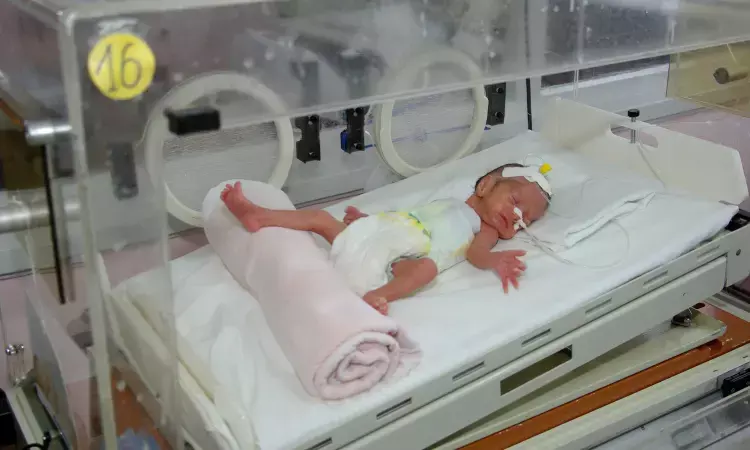- Home
- Medical news & Guidelines
- Anesthesiology
- Cardiology and CTVS
- Critical Care
- Dentistry
- Dermatology
- Diabetes and Endocrinology
- ENT
- Gastroenterology
- Medicine
- Nephrology
- Neurology
- Obstretics-Gynaecology
- Oncology
- Ophthalmology
- Orthopaedics
- Pediatrics-Neonatology
- Psychiatry
- Pulmonology
- Radiology
- Surgery
- Urology
- Laboratory Medicine
- Diet
- Nursing
- Paramedical
- Physiotherapy
- Health news
- Fact Check
- Bone Health Fact Check
- Brain Health Fact Check
- Cancer Related Fact Check
- Child Care Fact Check
- Dental and oral health fact check
- Diabetes and metabolic health fact check
- Diet and Nutrition Fact Check
- Eye and ENT Care Fact Check
- Fitness fact check
- Gut health fact check
- Heart health fact check
- Kidney health fact check
- Medical education fact check
- Men's health fact check
- Respiratory fact check
- Skin and hair care fact check
- Vaccine and Immunization fact check
- Women's health fact check
- AYUSH
- State News
- Andaman and Nicobar Islands
- Andhra Pradesh
- Arunachal Pradesh
- Assam
- Bihar
- Chandigarh
- Chattisgarh
- Dadra and Nagar Haveli
- Daman and Diu
- Delhi
- Goa
- Gujarat
- Haryana
- Himachal Pradesh
- Jammu & Kashmir
- Jharkhand
- Karnataka
- Kerala
- Ladakh
- Lakshadweep
- Madhya Pradesh
- Maharashtra
- Manipur
- Meghalaya
- Mizoram
- Nagaland
- Odisha
- Puducherry
- Punjab
- Rajasthan
- Sikkim
- Tamil Nadu
- Telangana
- Tripura
- Uttar Pradesh
- Uttrakhand
- West Bengal
- Medical Education
- Industry
Low-Frequency Sound in Incubators May Harm Premature Infants' Hearing in NICUs

Austria: A recent study published in Frontiers in Neonatology has highlighted the significant noise levels that preterm-born infants experience during their stay in Neonatal Intensive Care Units (NICUs).
Research shows noise levels impact preterm infants in NICUs. Nonetheless, there is a lack of particular data on sound qualities within and outside the incubator. The study aimed to evaluate noise level and sound characteristics within the incubator, focusing on environmental noise, incubator handling, and respiratory support.
The research was conducted at the Pediatric Simulation Center at the Medical University of Vienna. The noise levels inside and outside the incubator were evaluated using current signal analysis libraries and toolboxes. Differences between dBA and dBSPL values for the same acoustic noises were also examined. Sound characteristics were evaluated by analyzing more than 70 temporal, spectral, and modulatory timbre features.
The study concluded with the following clinical findings:
- 1.The results showed that the NICU environment is associated with high noise levels related to various real-life situations.
- 2.The study found differences between A-weighted (dBA) and unweighted (dBSPL) values for the same acoustic stimulus.
- 3.The incubator has a dampening effect on sounds, reducing high-frequency components, brightness/sharpness, and roughness.
- 4. A strong tonal booming component was noticeable, caused by the resonance inside the incubator cavity.
- 5.A resonance of the incubator at 97 Hz, reinforcing sound components in this range of up to 28 dB.
This research adds to the significant body of scientific literature on the noisy environment that premature infants experience during their stay in NICUs. While previous studies have focused on noise levels in general, this study provides specific data on sound characteristics within and outside the incubator.
The authors of the study added that “Their findings will contribute to improving the design of incubators and other equipment used in NICUs to reduce noise levels and preserve the hearing of premature infants. With this knowledge, healthcare providers can work to create a more comfortable and nurturing environment for these vulnerable infants, helping to improve their outcomes and long-term health.”
Reference:
Reuter, C., Bartha-Doering, L., Czedik-Eysenberg, I., Maeder, M., Bertsch, M. A., Bibl, K., Deindl, P., Berger, A., & Giordano, V. (2023, February 27). Living in a box: Understanding acoustic parameters in the NICU environment. Frontiers. https://doi.org/10.3389/fped.2023.1147226
Dr. Mahalakshmi Sivashankaran joined Medical Dialogues as an Intern in 2023. She is a BDS graduate from Manipal College of Dental Sciences, Mangalore Batch 2022, and worked as a Junior Resident at VMMC & Safdarjung Hospital at the Department of Dental Surgery till January 2023. She has completed a Diploma in Executive Healthcare management from the Loyola Institute of Business Administration, developing skills in Healthcare Management and Administration. She covers several medical specialties including Dental, ENT, Diagnostics, Pharmacology, Neurology, and Cardiology.
Dr Kamal Kant Kohli-MBBS, DTCD- a chest specialist with more than 30 years of practice and a flair for writing clinical articles, Dr Kamal Kant Kohli joined Medical Dialogues as a Chief Editor of Medical News. Besides writing articles, as an editor, he proofreads and verifies all the medical content published on Medical Dialogues including those coming from journals, studies,medical conferences,guidelines etc. Email: drkohli@medicaldialogues.in. Contact no. 011-43720751


